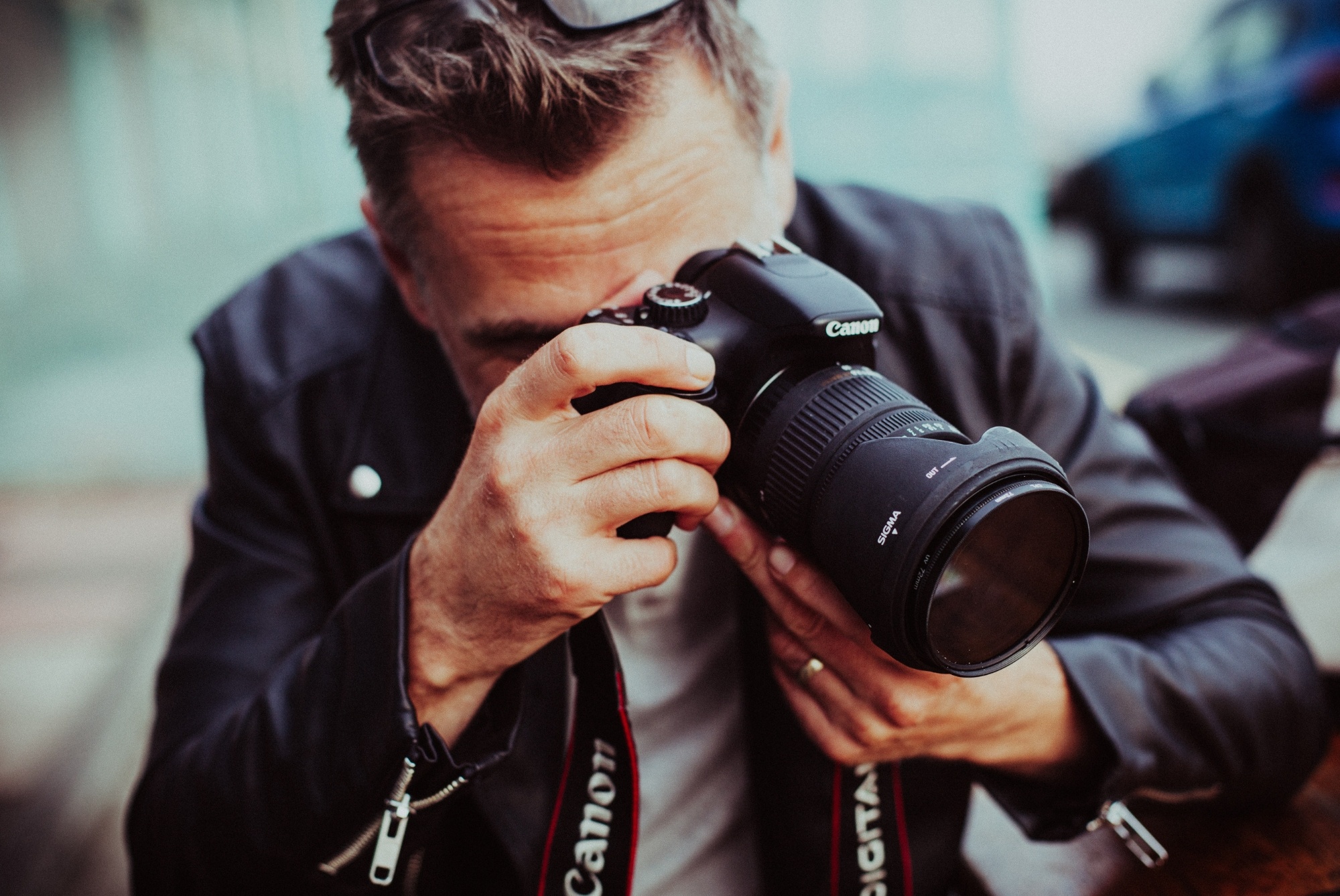
 Article by Tomeu Ozonas, professional photographer for over 20 years and CEO of PROretoque.com, the photo edition company for fashion brands.
Article by Tomeu Ozonas, professional photographer for over 20 years and CEO of PROretoque.com, the photo edition company for fashion brands.
We buy with our eyes. We need to see a product before buying it. That is why the photograph of the product has become an essential element of an online shop. When the user have no direct access to the product, photographs are the best way to learn about the appearance and the characteristics of that product. Everyone knows that the picture is largely responsible for the sale of the product. That is why it is so important for an e-commerce to have good photographers and, of course, good photo editors.
→ Check this out: Free stock photos for your website or online store
How to attract the attention of the user
The products of an e-commerce must offer an impeccable image to attract customers. A gesture as simple as clicking and introducing a product to a shopping cart will depend greatly on the image that the product transmits, since its appearance in the photograph goes directly to influence the intent of buying it and it will substantially reduce one of the major problems of the online stores, the deserted cart.
What is the visual reference that a customer has of the online shop products? How important is the first image of a product that the potential consumer sees to finish buying it? Why is it essential to retouch photographs of an e-commerce product to ensure conversion? In this article we are going to solve all these issues. We are going to analyze, one by one, all the essential aspects of the photography and retouching of product images for e-commerce.
In an online store the customer cannot appreciate the product in his hands before he makes the purchase, it is essential to offer the most accurate image possible. It must never be forgotten that it is all about giving confidence to the customer, introducing the product in the most visually attractive way possible.
→ Product photography or mockups? Discover which one is better for you
1. Quality and quantity
The quality and quantity of images offered of the product are two key points to achieve making an e-commerce user into a client. The picture of the product is the introducing letter to the customer: it must be clean and neat, complete and faithful to reality. In regard to the quantity of photos to be included in each product, the numbers depend on the product itself, although it is essential that there be at least one front picture of the full product, and as many as different perspectives and details you want to show - for example, to display a shoe you can include four photographs - front view, side view, rear view and detail of the laces, instep and toe-. If we look at the statistics of recent studies by Shopify on online consumer preferences, we find these data: only a 0.52% wants to see a single product photo, a 33.16% prefer to see multiple photos; and the majority of them, exactly a 58.03%, prefer photographs that will enable them to have a 360º vision of the product.
2. Size of the picture
Photos are the representation of the product for sale, so that the appropriate size and resolution are two essential characteristics. It must be borne in mind that a client of eCommerce usually looks every aspect of the product, so that, one of the tools they use the most is the zoom. A photograph well retouched is essential to show the client a quality product image and an image that will give him confidence. According to a study by the ONTSI, the National Observatory of Telecommunications and Information Society, 74% of the customers who do not buy online, express their fear that the product they receive at home is not the same as they see in the pictures. And, in fact, 35% of returns are made by considering that the image was misleading, so that special care must be taken with the fidelity of the image, as previously discussed.
In addition to these, what other aspects have to be looked after in the photography of e-commerce? We will see how to work the lighting, backgrounds and shadows, models, clothing and objects, both from the point of view of the photographer during the photo session, as from the photo editors.
3. Lighting
In photography of e-commerce, lighting is essential to get to appreciate all the characteristics of the product and the image is as faithful as possible to the reality. Therefore, it is important to take care of lights both at the time of making the photo session, such as the editing and retouching the image.
The first thing that must be clear is the difference between lighting and brightness. On the one hand, lighting makes reference to the direction, intensity and color temperature, which is what is going to provide volume and depth to the elements that compose it.
When we talk about lighting, therefore, we focus on what lights influence on the photo and how they do it. In the studio, a good use of the main light, for example, avoid marking unwanted wrinkles in the clothes as this type of light does not generate shadows in the folds and avoids the sensation of volume change of wrinkles. In fact, when garments with wrinkles are retouched, one of the values that are corrected to eliminate them is the luminosity, making them uniform in such a way that does not affect the texture and spirit of the garment itself.
The temperature, tone or intensity of lighting that we have for the photos of the product will change the end result of the image and thus the perception that the user have of this product. A product too much or poorly illuminated may make it appear different from what it is in reality.
When making the sessions in the studio for the photography of e-commerce we need a large space to place all the materials, including the needed to locate the different spotlights. The most delicate part is to find the ideal focal point the products and the most suitable light source.
Normally, in photography of e-commerce are necessary spotlights or torches of quite a lot of power (500W minimum); that way its light allow focus both the product and its background, if necessary. In addition, it usually requires light diffusers that soften the shadows on the product. Having the ideal amount of light and very diffuse is fundamental to the photograph of the product. In regard to forms and directions of light, the use of overhead and side windows will help to highlight the product in one way or another.
→ The 10 responsibilities of marketing departments
4. Backgrounds
In photography for e-commerce it is important that the background is uniform, smooth and clean either as final part or to facilitate the product’s silhouetted a posteriori. And to achieve this, it is essential the neatness of the studio, which should be clean and tidy at all times. The main retouch, which are made in the studio, are the elimination of items out of site, background wrinkles, materials such as wire or spotlight that may have crossed into the frame and footprints in the cyclorama.
In regard to backgrounds, we can make a division between flat background and background elements. Amazon itself is strict on
Backgrounds and shadows
The more recommended backgrounds for e-commerce photographs are those of neutral colors such as white, beige and cream. Placing a very intense colored background in the studio could alter the perception of the real colors in a garment, for example. The only way to avoid this disruptive effect is to position the background far away from the object when taking the picture because the distance will involve a different condition of the light and it won’t project a shadow on the background. For highly reflective products, take measures with your setup to make sure you maintain visually striking products that will wow your visitors.
It is important that lighting became independent, according to the product, so that the set of photos have a homogeneous background in the catalog. Only in this way we will avoid shadows and strange shapes behind the product.
The shadows of the catalog are very important. They should be balanced both in hardness as intensity and they are the element that outlines the volume and shape. In the retouching, the original photos can be preserved if they are good or they can be recreated digitally.
Background elements and 360°
When we speak of working with background elements (objects, garments…), we mean that there is not a model that holds it. In these cases, photos are taken using some tricks to hold and give shape to objects, especially in the case of accessories such as shoes or bags.
When working with background elements, what we want is that shadows are not projected, this will greatly facilitate the silhouetted on the product. In the case in which there is going to be carried out a 360°, these shadows do not contribute, but reduce the continuity in the viewer, being able to recreate them digitally in case of being necessary.
Resources commonly used at the time of the photo shoot:
When you photograph a shoe, a hat or a bag without a model, padding and elements such as fishing line are often used, so the product can keep its shape and the e-commerce client sees an image as close to reality as possible. Once in post-production, the photo editor must delete, above all, the elements and the imperfections.
On many occasions, in the studio are made numerous photographs so is easier to work with items that require a lot of detail, such as, for example, jewelry or shoes laces.
Guides, relative and framing of the shot.
In the post-production, it is important that the photo editor have some guides as a reference for the sizes and proportions of the products. Normally the photo on the air is also used to teach different points of view of the product, and it is essential that the customer have the feeling of looking at the same object from different angles and that the color does not change. A dress or a shirt, for example, you will notice right away if the long of it is not the same when changing the angles, because it is crucial to frame the products so that they maintain their relative sizes. They must keep the relative position on the catalog.
5.Models
On the photographs with models, aspects of the skin that may distract the attention of the client are the most commonly retouched. In spite of the fact that in the studio, the models are made-up constantly, so that the light and heat of the spotlights do not influence the final result, even so there are still shines, so the photo editor will be responsible for removing them. In addition, the long hours of work can cause that the make up blurred in certain areas, which is fixed in post-production. You will be able to retrieve the naturalness of some pale cheeks, or give color to lips, recreating the original state of the makeup newly applied, even in some cases improving it.


.png?width=520&name=Blog%20Partner%20(3).png)

.png?width=520&name=Blog%20Partner%20(1).png)


